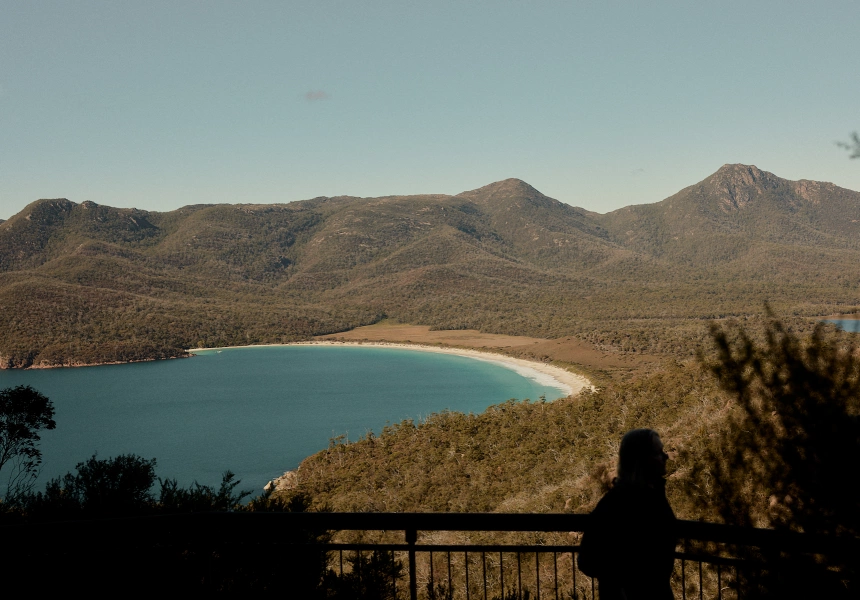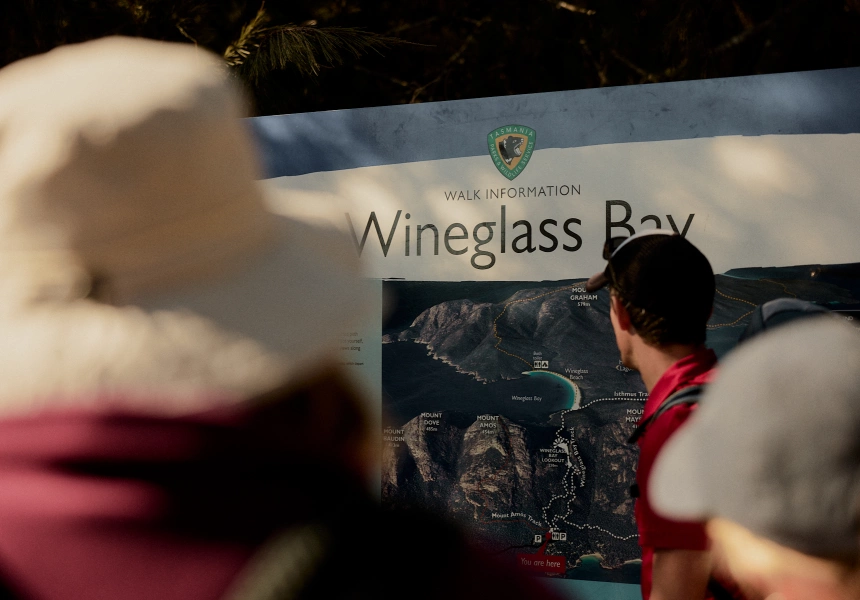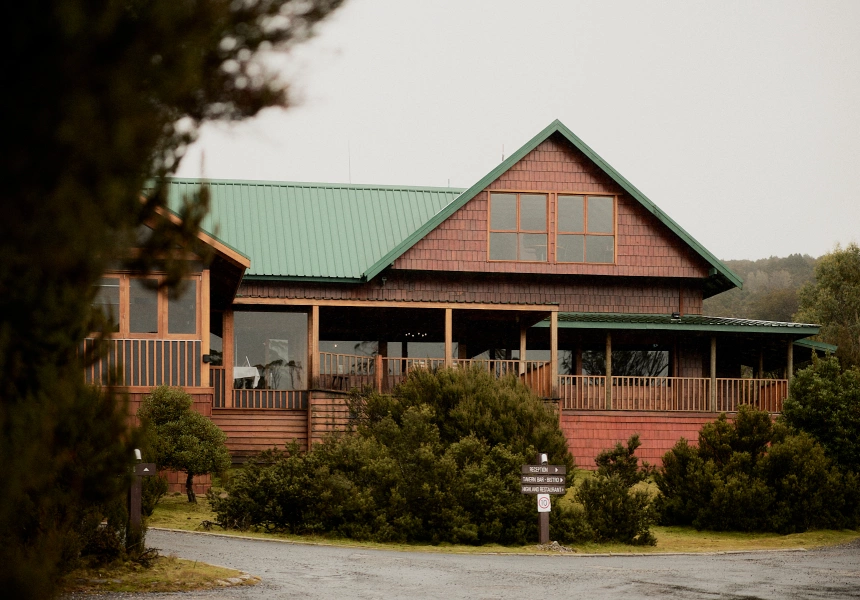“When people come down here, they’re so blown away by these beautiful trails with slightly rough edges. And it’s all in such close proximity,” trail runner Hanny Allston told Broadsheet in 2022. “It’s almost spiritual for so many people. I’ve had grown men crying on tours because it’s so beautiful and old.”
If ever a quote sums up Tasmania’s claim to being Australia’s best state for hiking, it’s this one. And it’s not hyperbole. There are 19 national parks across the island, encompassing everything from chilly alpine plateaus to temperate rainforests and soaring sea cliffs. Nearly a quarter of the state’s land mass is part of the Unesco-recognised Tasmanian Wilderness World Heritage Area, and remains practically untouched.
The challenge for casual hikers like me, then, isn’t deciding to go – just where to go. Thankfully, Intrepid’s Highlights of Tasmania trip solved that issue for me, recently putting me in a minibus with 12 other people to see the sights. The six-day tour includes numerous short walks (one kilometre or thereabouts) and a couple of opportunities to tackle distances up to 12 klicks, depending on your ability.
Never miss a moment. Make sure you're subscribed to our newsletter today.
SUBSCRIBE NOWOur driver and guide, Larry, is mad for the outdoors. When he’s not working, he’s walking, and he just recently completed the renowned Overland Track, a six-day, 65-kilometre beast for only the most experienced hikers. As we wander in front, alongside or behind him, he points out obscure wildlife the way the rest of us might point out street signs. “Look, a black currawong,” or “There goes a dusky robin, up there in the trees.”
His knowledge is astounding and enriches each walk, when we choose to stick with him. Other times, I opt to strike out with Broadsheet photographer Brook James for quieter or more challenging trails, safe in the knowledge that the area we’ve been brought to is one of Tassie’s most picturesque. And what we found is that the famous spots are famous for very good reason.
Cradle Mountain-Lake St Clair National Park
The aforementioned Overland Track is contained entirely within this alpine national park. It’s much too challenging for an office goblin like me, but it’s thankfully easy to experience the park’s grandeur while staying less than an hour from a hot espresso at all times. The infrastructure is superb, with frequent shuttle buses carrying visitors between various trailheads and architecturally impressive visitor centres. Wide, well-maintained boardwalks complement the more hardcore trails, and it’s one of these we set off on, as a group. Within the first 100 metres we spot a wombat a few steps away, fossicking in the open grassland.
Brook and I soon decide to go our own way, to get more panoramic views of the park’s 1000-year-old King Billy pines and pristine mountain lakes. Cradle Mountain itself is 1525 metres high, and over a few hours we make it as far as Marions Lookout (1200 metres) before a light drizzle sets in. Along the way, we skirt the secretive Crater Lake, pass tiny Wombat Pool and eventually drop back down to Dove Lake, where almost everyone seems to take a pic with the rustic old boatshed. We can’t stop stating the obvious: this place is bloody beautiful.
Back at Cradle Mountain Lodge, we order a couple of beers and park ourselves contentedly in front of the cavernous open fire. Other people from our group have had the same idea, and we spend time recapping the various routes we took before Larry shows up to take us to tonight’s beds.
Freycinet National Park
A few days later we find ourselves on this rugged 170-square-kilometre peninsula, designated a national park in 1916 and named after French navigator Louis de Freycinet. It’s ringed on all sides by postcard-perfect white-sand beaches. The interior is mountainous, crowned by pink- and red-tinged granite formations known as the Hazards. The park’s numerous trails undulate from forested hillside down to sand and back with regularity. Honeymoon and Sleepy bays have their charms, but the star attraction is rightfully Wineglass Bay. It was originally named, Larry tells us, not for its gentle curvature, but because hunters used to trap and kill whale pods in the bay, turning the water red with blood. It’s unthinkable now, that bloody scene in such a beautiful place.
Larry leads the less confident hikers up to the panoramic Wineglass Bay Lookout, a six-kilometre return trip from the car park. Brook and I push on, dropping right down onto Wineglass Bay Beach itself, then cutting sharply across the peninsula to reach the parallel Hazards Beach within 30 minutes. It’s windswept and deserted, but for a handful of other bushwalkers. A scattering of dramatic rocks and islands off the shore beg to be explored with a kayak. Alas, we’re due back at the bus in a few hours and follow the coastal path back around Fleurieu Point, touching beach a few times more but mostly hugging the tree line for spectacular views back towards the Hazards.
We only pass about three other people on the way back to the car park, which brings us to one further point about Tasmania: there are relatively few people here, locals or tourists. For my money, that alone makes it the king of hiking destinations.
This article is produced by Broadsheet in partnership with Intrepid Travel. Intrepid’s Highlights of Tasmania tour is a six-day, five-night fully guided trip that includes all transport and accommodation. Starting and concluding in Hobart, it covers all of the locations above (and more). Find out more here.




